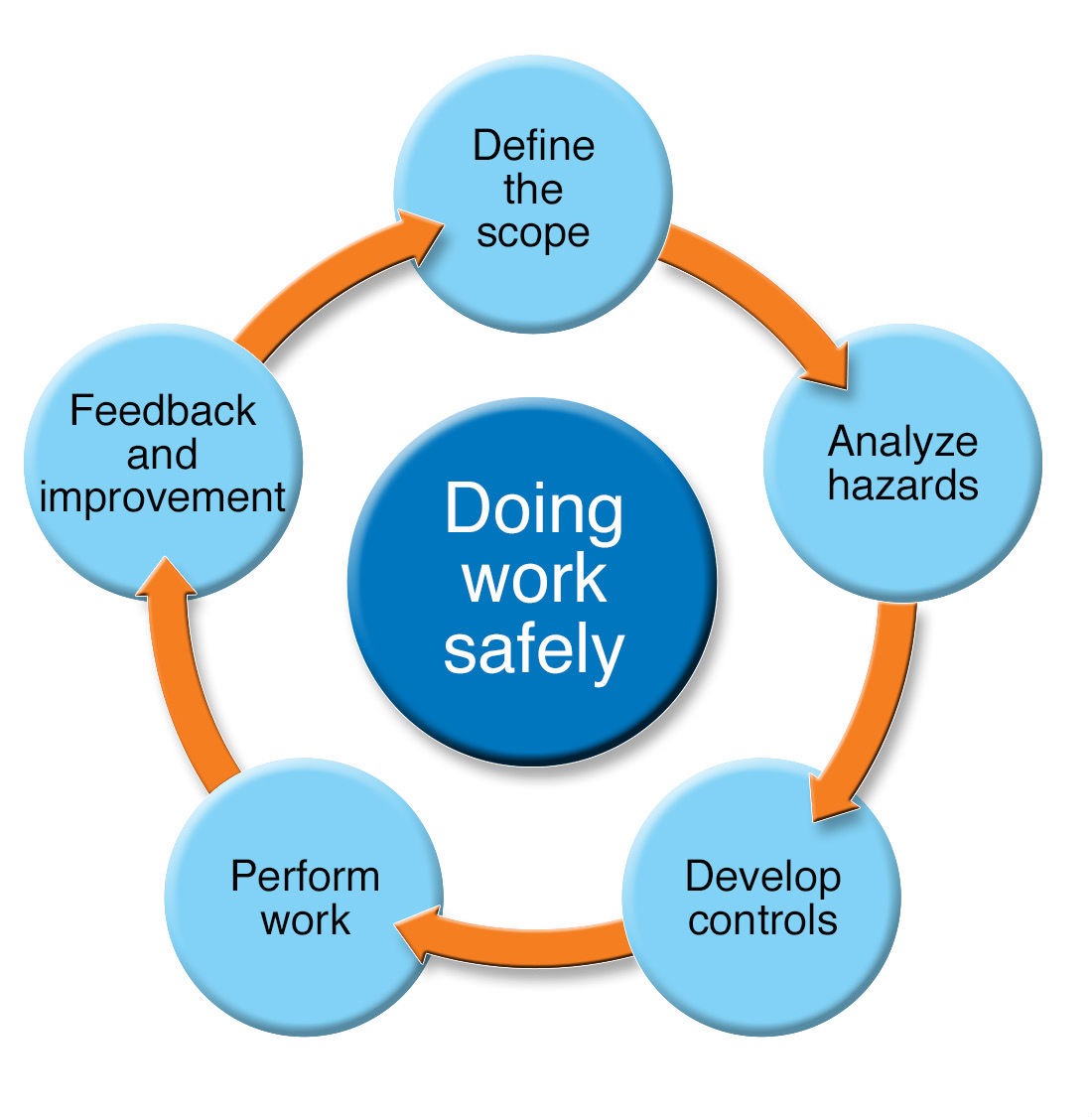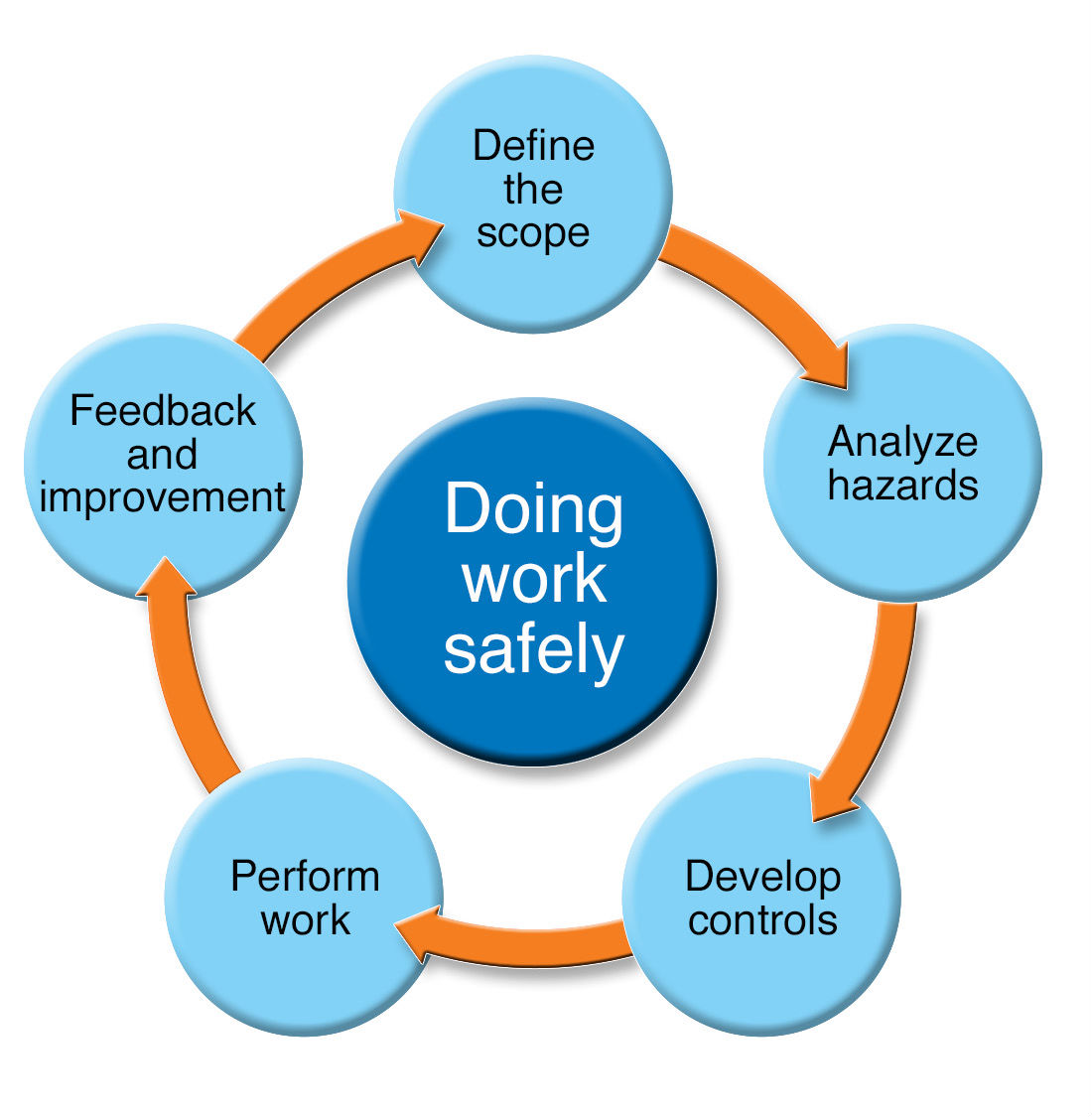IRIC Safety
Safety in the IRIC depends on each researcher, operations person and manager recognizing the need to conduct work safely and understanding how to achieve that goal. The information below addresses basic principles, roles and attributes that — when embraced — will influence how all work will be conducted in the IRIC.
The safe conduct of research is nonnegotiable and essential to the mission of IRIC. All individual IRIC occupants and associated organizations must emphasize safety over competing priorities.
This information is complementary to and should be used in conjunction with the IRIC’s safety program or other published policies and procedures.
Because of the special characteristics and unique hazards of IRIC, the facility must incorporate a healthy safety culture, founded on a collective commitment to put safety first. This commitment applies to everyone involved with the IRIC, from the vice president of research to an individual contributor. No one is exempt from the obligation to ensure protection of people, the environment and the facility.
The IRIC Safety Committee has articulated a set of principles that shape our behavior and form the basis for a strong safety culture. Whether you are a principal investigator, visiting scientist, group leader, project manager, program manager, laboratory technician, graduate student or undergraduate student, your behavior creates our culture.
- Everyone is personally responsible for ensuring safe operations
- Leaders value the safety legacy they create in their discipline
- Staff and students raise safety concerns because trust permeates the organization
- Cutting-edge science requires cutting-edge safety
- A questioning attitude is cultivated
- Learning never stops
- Hazards are identified and evaluated for every task, every time
- A healthy respect is maintained for what can go wrong
Because hazards associated with research can change with little or no warning, the IRIC employs a layered defense strategy to ensure staff and facility safety.
- Layer 1: Research Staff and Students
Research staff and students performing laboratory experiments have the best understanding of the work they are performing. As a result, they should have the greatest knowledge of hazards associated with the work, and they are best positioned to understand both the unknowns and the potential energies involved in experiments. Their attention to experimental conditions, competence and expertise form the first layer of defense.
Research staff and students are encouraged to use subject matter experts, peers and support staff to delve into areas where their personal knowledge could be lacking.
- Layer 2: Space Managers and IRIC Facility Manager
The expert knowledge of space managers and the IRIC facility manager — and their dedication to ensuring safe operation of laboratories and user facilities — form the second layer of defense. To be effective, the space managers and IRIC Facility Manager must understand the work being conducted in their assigned spaces and throughout the IRIC.
- Layer 3: Management
Principal investigators and program/project managers provide the third layer of defense. They are expected to be knowledgeable about the work being conducted by their staff, the competence of the staff executing the work, and the effectiveness of the assigned space managers in performing their roles. Management awareness is gained from active engagement with staff and students performing research and space managers.
The only way of detecting failures in the first two layers of defense is management presence in the field and technical expertise.
Maintaining a strong safety culture and understanding the layered defense strategy alone isn’t enough. Ultimately, safety relies on people performing specific tasks at the working level.
In today’s complex world, many laws, regulations, standards and controls must be integrated into daily work activities. UI has a system for capturing these inputs and distilling them into a set of operating procedures.
This section outlines a simple concept, Integrated Safety Management, which forms the foundation for all of our procedures and processes. In times of uncertainty, this concept can be a useful tool in framing one’s thinking about what to do next.
Integrated Safety Management has five core functions consistent with the scientific method:
- Define the Work and Its Hazards. Translate the work objectives into defined work activities that will meet those objectives and identify expectations for the performance of that work.
- Analyze the Hazards. Identify and analyze the hazards, as well as safeguards and security issues associated with the planned work. This includes potential effects on workers, the public and the environment.
- Develop and Implement Hazard Controls. Identify the applicable standards and requirements that address the identified hazards and security issues, establish appropriate work controls to prevent and mitigate those hazards, implement those controls, and allocate resources to ensure that the controls are effective.
- Perform Work Within Controls. Confirm readiness and perform the work safely in accordance with the established work controls.
- Provide Feedback and Continuous Improvement. Assess and provide feedback on the adequacy of controls and continually improve the programs and processes that form integrated safety management

Safety Information
- IRIC Emergency Evacuation Plan doc
- IRIC Emergency Response Plan docx
- IRIC Fire Safety Plan docx
- IRIC Open Burning and Barbecue Policy docx
- IRIC Hazard Communication Program pdf
- IRIC Lab Safety Plan doc
- UI Biohazard Waste and Sharps Disposal docx
- U of I Lab Safety Agreement pdf
- UI Training Needs Assessment pdf







